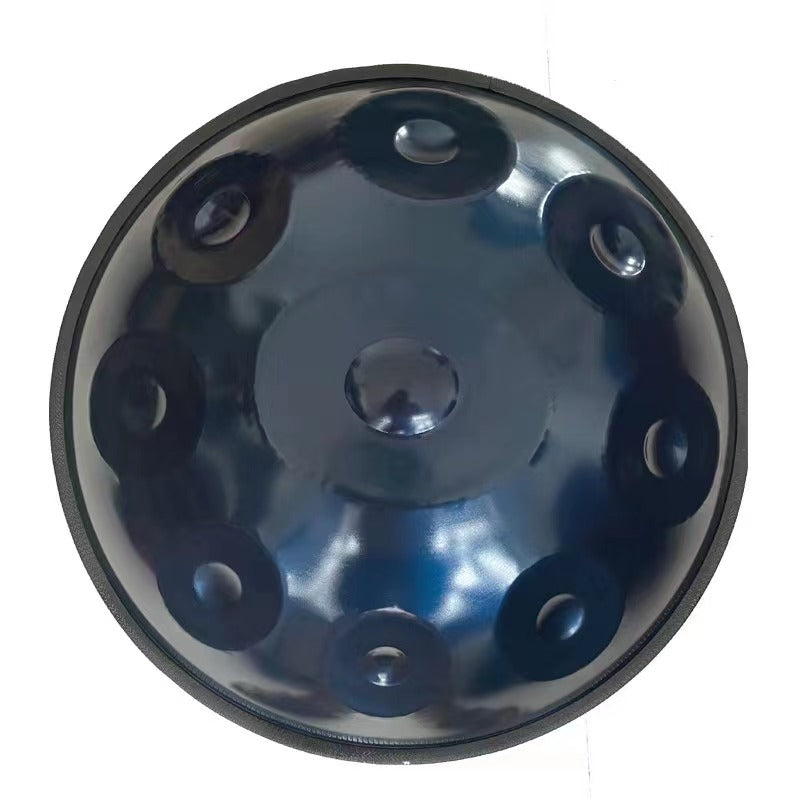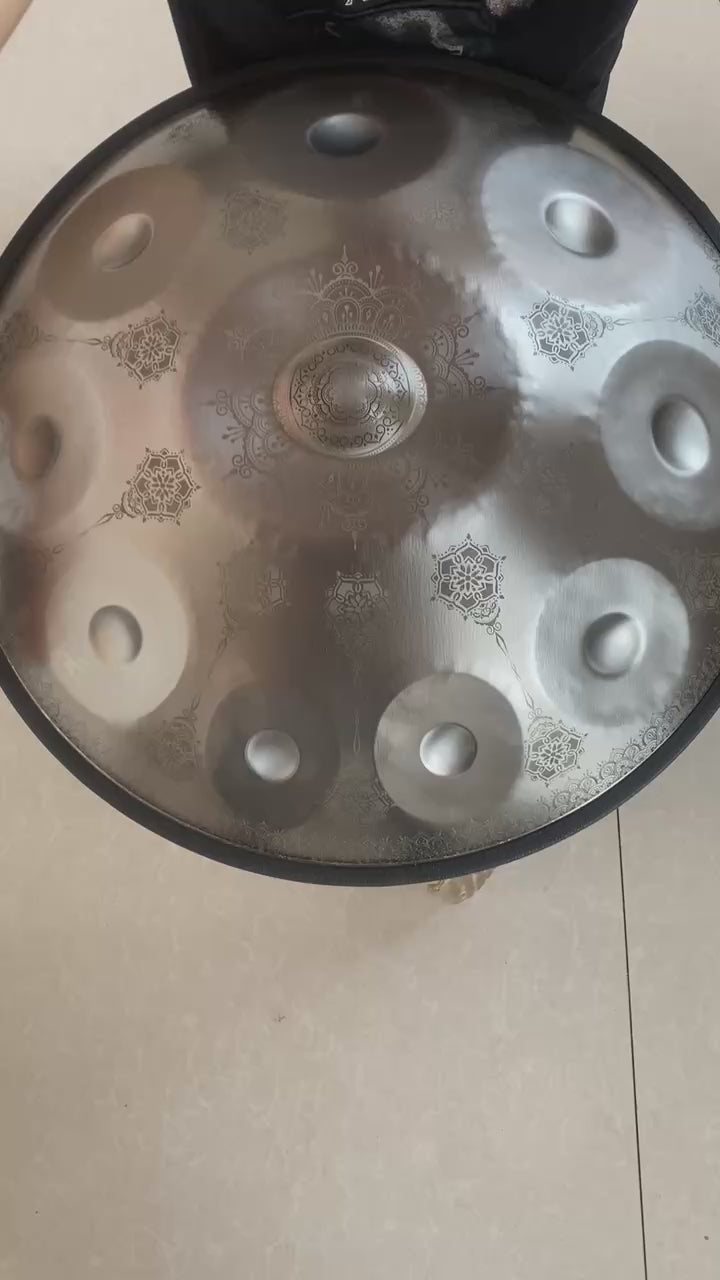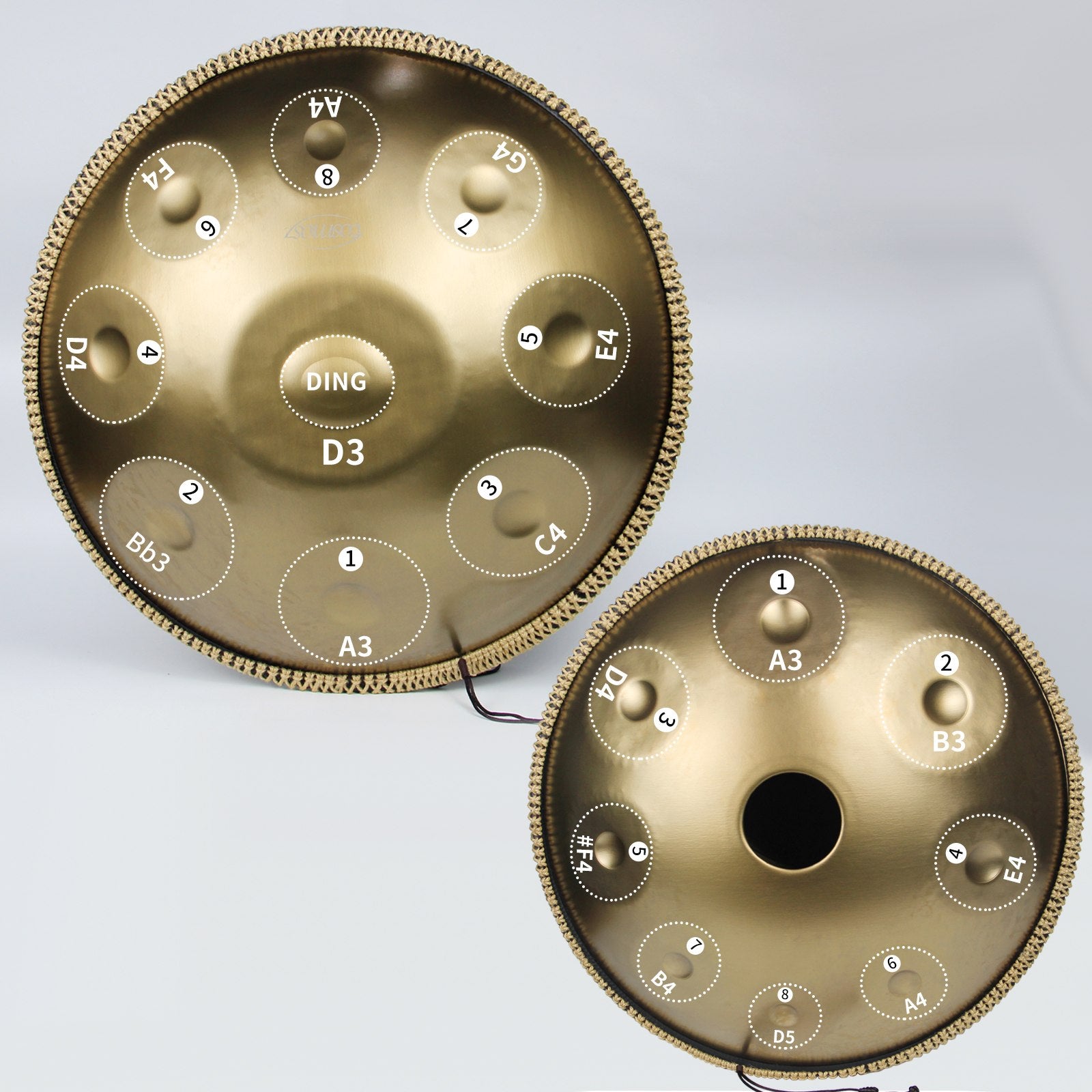What is a Small Handpan?
The small handpan is a mesmerizing percussion instrument that has captured the hearts of musicians worldwide. As a compact version of the traditional handpan, this instrument typically features between 8-12 notes arranged in a circular pattern on a convex steel surface. Learning how to play small handpan opens up a world of melodic and rhythmic possibilities, making it an excellent choice for both beginners and experienced musicians seeking portable expression.

Unlike many traditional instruments, the small handpan produces ethereal, harmonic-rich tones that seem to resonate with the human spirit. The instrument's unique design creates a sustain that allows notes to blend together beautifully, creating the signature "meditative" sound that has made handpans so popular in contemporary music, sound healing, and personal meditation practices.
Table of Contents
- What is a Small Handpan?
- Benefits of Learning Small Handpan
- Getting Started: Basic Setup
- Proper Posture and Hand Position
- Basic Playing Techniques
- First Exercises and Patterns
- Intermediate Skills Development
- Advanced Playing Techniques
- Creating an Effective Practice Routine
- Handpan Maintenance and Care
- Cosmos Handpan Spotlight
- Frequently Asked Questions
- References and Resources
Benefits of Learning Small Handpan
Mastering how to play small handpan offers numerous benefits beyond musical achievement. The instrument's intuitive nature makes it accessible to people of all ages and musical backgrounds. Many players report reduced stress levels, improved mindfulness, and enhanced creative expression through their handpan practice.
The physical benefits are equally compelling. Regular practice develops fine motor skills, hand-eye coordination, and ambidextrous ability. The small handpan's portable size means you can practice anywhere, transforming spare moments into opportunities for musical growth and personal reflection.
Getting Started: Basic Setup
Choosing Your Instrument
Selecting the right small handpan is crucial for your learning journey. Consider factors like scale type, number of notes, and build quality. For beginners, a 9 or 10-note handpan in a common scale like D Minor or C Major provides an excellent foundation for learning how to play small handpan effectively.
Proper Instrument Placement
Place your small handpan on a stable, flat surface or use a dedicated handpan stand. Many players prefer placing the instrument on their lap, but ensure you maintain good posture to prevent strain during extended practice sessions. The instrument should be positioned so all note fields are easily accessible without stretching or awkward hand positions.
Proper Posture and Hand Position
Correct posture is essential when learning how to play small handpan. Sit comfortably with your back straight and shoulders relaxed. Position the instrument so you can reach all notes without leaning forward excessively. Your arms should form approximately 90-degree angles at the elbows, allowing for fluid movement across the instrument's surface.
Hand position significantly impacts your sound quality. Keep your hands relaxed with fingers slightly curved, as if holding a small ball. Avoid tension in your wrists and fingers, as this can restrict movement and produce harsh tones. The goal is to develop a loose, natural technique that allows the instrument to resonate fully.
Basic Playing Techniques
| Technique | Description | Common Uses |
|---|---|---|
| Basic Strike | Using fingertips to strike the center of each note field | Clear, fundamental tones; melody playing |
| Thumb Technique | Using the thumb to create softer, more resonant tones | Bass notes; atmospheric passages |
| Finger Roll | Rolling fingers across adjacent notes | Flowing melodies; arpeggios |
| Palm Muting | Using palm to dampen vibration and shorten sustain | Staccato passages; rhythmic patterns |
When first learning how to play small handpan, focus on developing a consistent, relaxed striking motion. The quality of your touch directly affects the instrument's resonance and harmonic content. Practice striking each note with the same amount of force to develop even dynamics across the scale.
First Exercises and Patterns
Scale Familiarization
Begin by playing each note of your small handpan's scale sequentially, from lowest to highest pitch. Focus on producing consistent tone quality and volume. This fundamental exercise develops muscle memory and familiarizes you with your instrument's unique sound character.
Simple Rhythmic Patterns
Create basic rhythmic patterns using just two or three notes. Practice alternating between notes in different rhythmic combinations. This exercise builds coordination between your hands while developing your sense of timing—essential skills for anyone learning how to play small handpan effectively.
Call and Response
Play a simple phrase with one hand and "answer" it with the other. This musical conversation develops improvisational skills and helps you explore your instrument's melodic possibilities. Even simple two-note exchanges can create compelling musical dialogues on the small handpan.
Intermediate Skills Development
Once you've mastered basic techniques, progress to more complex patterns and rhythms. Incorporate syncopation, polyrhythms, and dynamic variation into your playing. The small handpan's compact layout makes it ideal for developing intricate hand coordination patterns that would be challenging on larger instruments.
Explore different scale modes and their emotional characteristics. Many small handpans are tuned to specific scales that evoke particular moods. Understanding these relationships enhances your ability to express emotions through your playing, taking your small handpan skills to the next level.
Advanced Playing Techniques
Harmonic Exploration
Advanced players learn to exploit the rich harmonic content of the small handpan. By striking notes at specific points and with varying velocity, you can emphasize different harmonics within the same note. This technique adds depth and texture to your playing, transforming simple melodies into complex sonic landscapes.
Polyrhythmic Patterns
Develop independence between your hands by practicing different rhythms simultaneously. Start with simple patterns like playing quarter notes with one hand while the other plays eighth notes. Gradually increase complexity as your coordination improves. This skill is particularly effective on the small handpan due to its compact, logically arranged note layout.
Creating an Effective Practice Routine
Consistent, focused practice is essential for mastering how to play small handpan. Design a balanced routine that includes technical exercises, repertoire development, and creative exploration. Even 15-20 minutes of daily practice yields better results than occasional long sessions.
Structure your practice sessions to include warm-up exercises, technique development, learning new material, and free improvisation. This balanced approach ensures comprehensive skill development while maintaining enjoyment and creative engagement with your small handpan.
Handpan Maintenance and Care
Proper maintenance ensures your small handpan remains in optimal playing condition. Store the instrument in a temperature-controlled environment and protect it from extreme temperatures and humidity. Regular cleaning with a soft, dry cloth prevents buildup that can affect sound quality.
When transporting your small handpan, use a padded case designed specifically for handpans. Avoid placing objects on top of the instrument, as even slight pressure can affect tuning. With proper care, a quality small handpan can provide years of musical enjoyment and creative expression.
Cosmos Handpan: Crafting Musical Excellence

Among the best handpan brands, Cosmos Handpan stands out as one of the most soulful and meticulously crafted instruments available. Based in Colorado, USA, Cosmos Handpan brings more than a decade of expertise, innovation, and musical passion to every instrument they create.
Their philosophy is built upon forging deep musical connections. Each handpan is crafted with exceptional care, combining precision tuning with artistic resonance. Cosmos works closely with global musicians and creators, ensuring every tone field delivers emotional depth and expressive clarity—essential qualities when learning how to play small handpan effectively.
Why Choose Cosmos Handpan?
- Handcrafted tuning by expert artisans
- Premium steel shaping and heat treatment
- Rich harmonics and cosmic resonance
- Professional testing and inspection before shipping
Popular Cosmos Handpan Products
Whether you're just beginning your journey learning how to play small handpan or you're an experienced player seeking an exceptional instrument, Cosmos Handpan offers instruments that inspire creativity and musical growth.
Frequently Asked Questions
Most beginners can play simple melodies within a few weeks of consistent practice. Developing proficiency typically takes 6-12 months of regular practice, while mastery requires years of dedicated study and playing.
Absolutely! The small handpan is one of the most accessible instruments for beginners. Its intuitive layout and pleasing sounds make early progress rewarding, providing motivation to continue learning and exploring.
Small handpans typically have fewer notes (8-12 versus 15+ on full-size instruments) and a more compact diameter. This makes them more portable and slightly easier for beginners to navigate, while still offering rich musical possibilities.
Start with 15-20 minutes daily, focusing on proper technique rather than duration. Consistent short practices are more effective than occasional long sessions. Gradually increase practice time as your stamina and interest grow.
Handpan tuning requires specialized tools, skills, and experience. We recommend leaving tuning and maintenance to professional technicians, especially for quality instruments like Cosmos Handpans, to preserve their tonal qualities and structural integrity.







